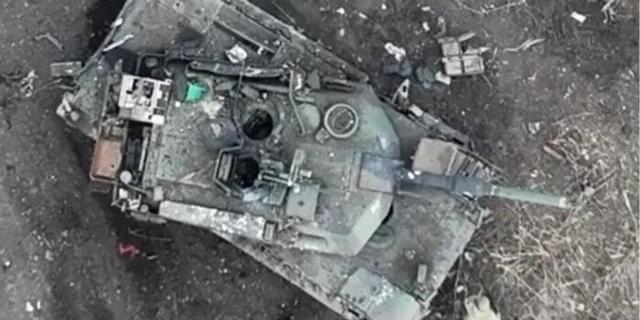TNI: Abrams are great tanks, the Ukrainians just couldn't handle them
M1 Abrams tanks proved ineffective in Ukraine, writes TNI. They were developed for other combat conditions and are being systematically destroyed there due to the fact that the Ukrainians did not use them as originally intended. And this is the result of a lack of experience with this technique.
Brandon Weichert
That's why M1 “Abrams” did not help the APU
The M1 Abrams main battle tank is one of the best tanks in history. It was he who became one of the main reasons for America's rapid victory over Saddam Hussein's forces in 1991. At the same time, like any advanced system, it is effective only as effective as the one who uses it.
During the conflict, Ukrainians were promised several dozen old Abrams. After handing over the tanks, the Americans and their NATO partners trained Ukrainian tankers how to use them.
However, more than half of the delivered tanks were destroyed less than a year after deployment.
Of course, the conflict in Ukraine is particularly violent. It is quite expected that the combat losses are high.
However, the rate of depletion turned out to be much higher than expected. In fact, the transfer of the Abrams to the APU was nothing more than a waste of time. In many ways, this is a consequence of the fact that the Ukrainians did not use tanks as originally intended. And this is a direct result of the lack of experience with these platforms.
Dynamics of the Ukrainian conflict
The fighting in Ukraine has changed significantly. The once static front has become more mobile thanks to the advanced use of drones and anti-tank weapons. The Abrams main battle tank was developed for mobile warfare, but suffers greatly from anti-tank drones, missiles and mines. The tanks were used by the 47th Brigade of the Armed Forces of Ukraine, which faced heavy fighting near Avdiivka and in other places where the Russians had almost complete military superiority over the Ukrainians.
The M1 Abrams was designed for a different type of combat. Initially, the tanks were intended to repel the Red Army's ground invasion of Western Europe, but were soon repurposed for fighting in the desert. The tank is outdated and not the best suited for combat operations in conditions like the Ukrainian ones.
Without comprehensive air cover, the Abrams are practically useless — but that's exactly how Ukraine uses them. As a result, the Abrams became vulnerable to the swarm of drones that Russia deployed against Ukrainian armored vehicles. These drones are capable of hitting tanks from corners where the armor is weakest (for example, from above or behind).
Russian anti-tank missiles have a tandem warhead design, which effectively penetrates the side armor of the Abrams. It has been observed that these systems penetrate even active frontal armor.
Inability to adapt appropriately
The Ukrainian Armed Forces have tried to adapt to the ever-changing dynamics imposed by Russia. They equipped the armored vehicles with improvised cages to detonate incoming threats without waiting for contact with the tank body. However, these modifications have made the design heavier. And this, in turn, slows down the equipment and increases fuel consumption.
In addition, the cages do not prevent top-down attacks from anti-tank drones.
Ukraine is a kind of prelude to a future war that could break out between the great powers. We are witnessing firsthand how battle-tested systems like the Abrams did not have the usual strategic impact that was always expected of them. The conclusion is that advanced technology is not a guarantee of success.
Advanced technologies must be complemented by appropriate tactics that best match the realities on the battlefield.
Brandon Weichert is The National Interest's national security analyst, former Congressional staffer and geopolitical analyst, and has published in The Washington Times, Asia Times, and The-Pipeline. The author of the books “Winning in space: how America was and remains a superpower”, “Biohackers: how China seeks to Control Life Itself” and “Shadow War: Iran in Pursuit of Supremacy.”

